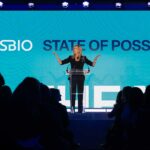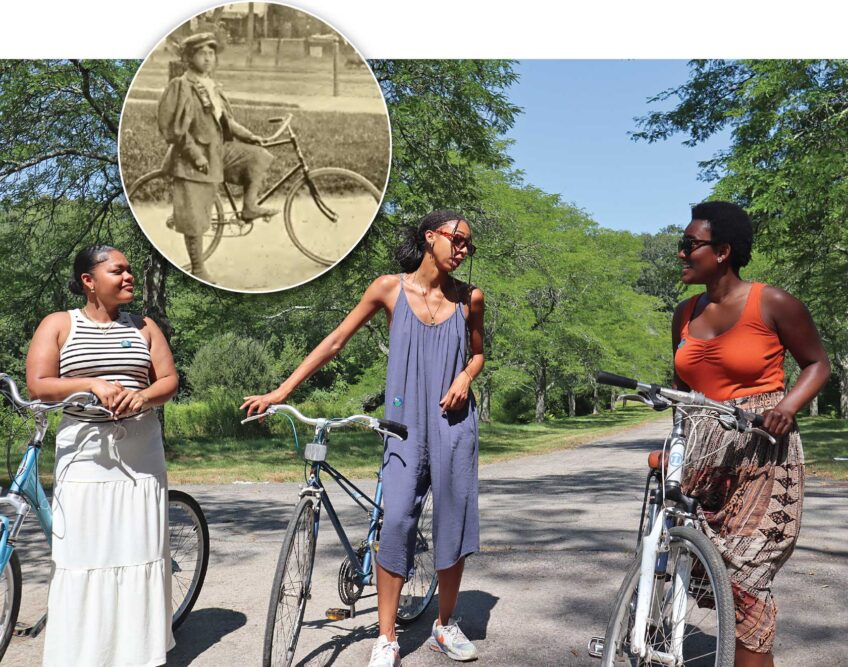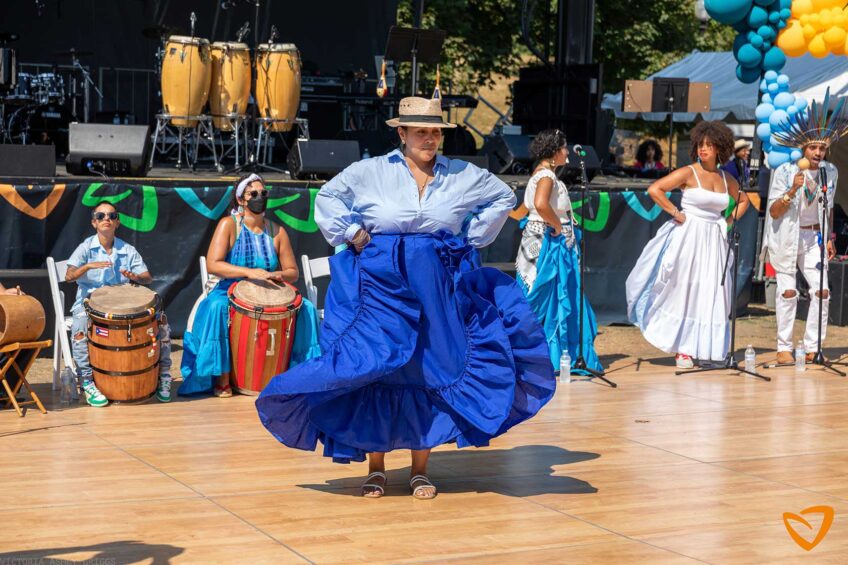Banner [virtual] Art Gallery
Paul Goodnight in conversation with artist Lucilda Dassardo-Cooper
![Banner [virtual] Art Gallery Banner [virtual] Art Gallery](https://baystatebanner.com/wp-content/uploads/2023/11/Chant-Down-Babylon_WM-764x1024.jpg)
View Banner Art Gallery
Sponsored by MFA/Boston
This is the fourth in a weekly series presenting highlights of conversations between Boston artist Paul Goodnight and leading Black visual artists in New England. In this week’s podcast, Goodnight interviews painter Lucilda Dassardo-Cooper. The interview has been condensed and slightly edited.
Dassardo-Cooper represented the United States in India’s Triennale, with her signature “Veiled Presence” series of oil paintings, created in the country, hung in New Delhi’s National Gallery of Modern Art. The same honor was once bestowed on the late painter Sam Gilliam. Dassardo-Cooper’s series made its American debut at the Parish Gallery in the Georgetown section of Washington, D.C., commemorating India’s 50th anniversary.
Paul Goodnight: Who are the three people who most inspired you to follow your calling?
Lucilda Dassardo-Cooper: I would have to say me, myself and I.
Why?
Because you have two kinds of artists: You have the artists who follow their calling, as you say, and then there are the artists who put their skills and experience to work for other people — illustrators. But then there’s art which comes from your heart. It won’t let you have any peace until you put it down on the canvas. Sometimes you don’t know where it’s going, but you trust that it’s leading you somewhere. If I didn’t have a deep conviction and a deep necessity to create art, then I probably wouldn’t have gotten there.
Was there anyone you really looked up to? Mentors?
Yes.Well, there was a period when we worked together, shared observations. And I had a high school art teacher from Boston — Arnold Hurley. He was a good teacher and helped me work out some of my issues of perspective, etc.
Did your parents support you in becoming an artist?
My parents supported me in being anything I wanted to be.
Whose work inspired you in your development as an artist, who you haven’t met?
A lot of people. I remember going to the MFA and standing in front of Gauguin’s painting, “Where Do We Come From? What Are We? Where Are We Going?” Oh, wow, there’s someone who gets it. There’s somebody who thinks the same way I do. That’s been my issue as a child growing up in Jamaica. I knew I wanted to be an artist, but I didn’t know any artists.
How did you first get into art?
The way I first got into art was watching my brother paint. It was a revelation to me. You could get into whole worlds by mixing color and putting it on paper. So, I harassed him until he let me paint. That was the beginning of my journey.
Do you feel that art is your voice — that you’re more comfortable revealing something about yourself through art?
Almost in spite of myself, I’m revealed. As the painting progresses, a lot of the things in my subconscious come out in the artwork.
How does your art untangle the knot of racism?
I don’t really think my art is political and untangles the knot of racism, but what I noticed from an early time while I was in college was there was nothing that represented us. And whenever I did artwork of people of color, they would say “Oh, your subject matter is limited.” Part of my conscious focus has been to represent people of color.
What are you most grateful for?
I’m most grateful for breath. Breath is what connects us to life, and breath powers the body we live in. And my yoga practice keeps me focused, calm and strong — not just physically, but mentally and emotionally.
Besides yoga, do you have any rituals that you go through before you do the artwork?
Yoga is a daily ritual for my existence. But the ritual while I’m doing my artwork is music.
What kind of music do you listen to?
It depends on what I’m working on. One of things that moves me from the state of just normal, ordinary reality to more of an exalted state — an altered state where I’m focused — is music. It affects our nervous system in the way few other things do.
Why is there a need for art?
Art makes our lives more beautiful. It’s decorative. It’s functional in that way. It also affects our mood and feelings, and, just like music, it can change our perception of the world.
How do you handle an artist’s block?
I’ve had periods where I just couldn’t put myself in front of a canvas, and usually they were periods when I was in deep pain about something. One of the things I’ve learned to do is to let (my creativity) become my way of processing pain.
Tell me something about your artwork.
When I first started doing serious painting, one of the things I used to do was layer my images. That was before Photoshop. Because I just wanted to capture the various levels of our experiences.
View Banner Art Gallery









